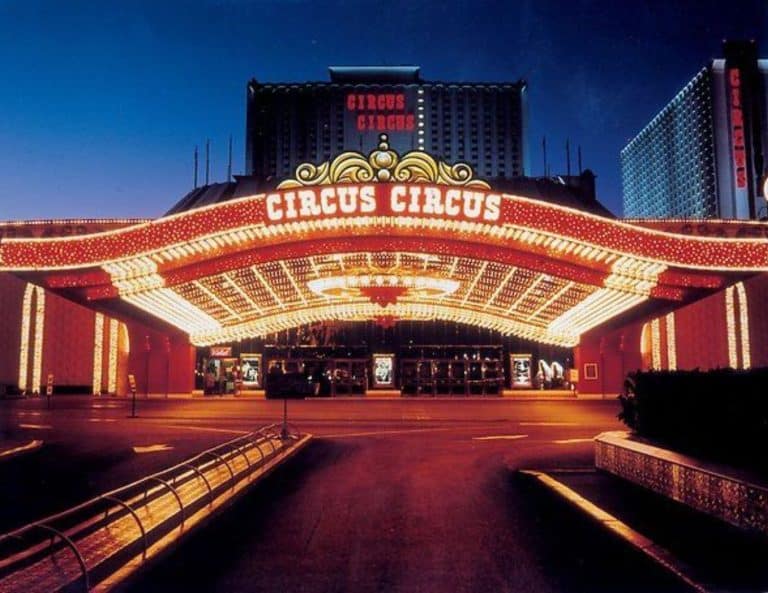Looking to add a touch of elegance to your hotel rooms? One way to instantly upgrade the ambiance and functionality is by choosing the right curtains. Curtains not only enhance the overall decor but also provide privacy and control the amount of natural light entering the room. If you’re wondering about the different types of curtains used in hotels, you’ve come to the right place.
If you’re short on time, here’s a quick answer to your question: Hotels typically use five types of curtains – blackout curtains, sheer curtains, thermal curtains, acoustic curtains, and decorative curtains. In this article, we’ll explore each type in detail, discussing their benefits, features, and best applications. So, let’s dive in!
1. Blackout Curtains
Blackout curtains are a popular choice in hotels due to their ability to block out sunlight and provide maximum privacy. These curtains are made from a heavy, opaque fabric that is tightly woven to prevent any light from passing through. The fabric is usually coated with a special backing that enhances its light-blocking properties.
Benefits and Features
One of the main benefits of blackout curtains is their ability to create a dark and cozy atmosphere in hotel rooms, allowing guests to sleep comfortably even during daylight hours. They are particularly useful for travelers who are adjusting to different time zones or for those who simply prefer a completely dark room for sleeping. Blackout curtains also provide excellent insulation, helping to regulate the temperature in the room and reducing energy costs. Additionally, these curtains can effectively block out external noise, providing a quieter and more peaceful environment for guests.
Best Applications
Blackout curtains are commonly used in various areas of hotels, including guest rooms, conference rooms, and spa and wellness facilities. In guest rooms, blackout curtains are essential for ensuring a restful sleep experience for guests. They are also commonly used in conference rooms to create a dark and focused environment for presentations or screenings. In spa and wellness facilities, blackout curtains are utilized to create a serene and relaxing atmosphere for clients during treatments.
2. Sheer Curtains
– Benefits and Features
Sheer curtains are a popular choice in hotel interiors due to their elegant and sophisticated appearance. These curtains are made from lightweight fabrics such as voile, chiffon, or lace, which allow a significant amount of natural light to filter through. The translucent nature of sheer curtains creates a soft and romantic ambiance in hotel rooms, making them perfect for creating a relaxing and inviting atmosphere for guests.
One of the key benefits of sheer curtains is their ability to provide privacy while still allowing a view of the outside. With sheer curtains, guests can enjoy the natural light and the beautiful scenery beyond their windows without compromising their privacy. The sheer fabric also helps to reduce glare and filter out harsh sunlight, creating a comfortable environment for guests to relax and unwind.
Sheer curtains offer versatility in terms of design and style. They come in a wide range of colors, patterns, and textures, allowing hotel designers to choose curtains that complement the overall theme and decor of the hotel. Whether it’s a modern and minimalistic design or a traditional and opulent style, sheer curtains can be customized to suit any interior aesthetic.
– Best Applications
Sheer curtains are commonly used in various areas of hotels, including guest rooms, lobbies, and dining areas. In guest rooms, sheer curtains are often paired with heavier drapes or blackout curtains to provide guests with the option of controlling the amount of light and privacy they desire. The combination of sheer curtains and drapes creates a layered look that adds depth and dimension to the room.
In hotel lobbies, sheer curtains are often used to create a sense of openness and brightness. They allow natural light to flood the space, making it feel welcoming and inviting to guests. Sheer curtains can also be used as room dividers in open-concept lobby areas, providing a degree of separation without completely blocking off the space.
Another application of sheer curtains is in hotel dining areas. They can be used to create a soft and intimate atmosphere, making guests feel comfortable and relaxed while enjoying their meals. Sheer curtains can be used to frame windows or create partitions between dining areas, adding a touch of elegance to the overall dining experience.
3. Thermal Curtains
– Benefits and Features
Thermal curtains are a popular choice for hotels due to their ability to regulate temperature and provide insulation. These curtains are specially designed to prevent heat loss during the colder months and to keep the heat out during the warmer months. They are made with multiple layers of fabric, including a thermal lining that traps air and creates a barrier against temperature fluctuations. This can help hotels reduce their energy consumption and save on heating and cooling costs.
One of the key benefits of thermal curtains is their ability to block out sunlight and UV rays. The thermal lining not only provides insulation but also acts as a blackout material, ensuring that hotel rooms remain dark and comfortable for guests who prefer to sleep in a darker environment. This can be especially beneficial for hotels located in areas with high levels of sunlight or for rooms facing bright street lights.
Additionally, thermal curtains are known for their noise reduction properties. The multiple layers of fabric and thermal lining help to absorb and dampen outside noise, creating a quieter and more peaceful environment for hotel guests. This can be particularly important for hotels located in busy city centers or near airports or highways.
– Best Applications
Thermal curtains are versatile and can be used in various areas within a hotel. They are commonly installed in guest rooms to provide guests with a comfortable and energy-efficient environment. However, they can also be used in other areas such as conference rooms, restaurants, and lounges to create a more pleasant atmosphere and reduce energy costs.
Thermal curtains are especially beneficial for hotels located in regions with extreme weather conditions. They can help to maintain a consistent temperature inside the hotel, regardless of the external weather conditions. Furthermore, hotels that prioritize sustainability and energy efficiency can greatly benefit from the use of thermal curtains, as they contribute to reducing the carbon footprint of the establishment.
When choosing thermal curtains for a hotel, it is important to consider factors such as fabric quality, design, and proper installation. High-quality fabrics with good thermal insulation properties should be selected to ensure maximum energy efficiency. Additionally, the design and color of the curtains should complement the overall aesthetics of the hotel. Proper installation is crucial to ensure that the curtains effectively seal the windows and provide the desired thermal benefits.
For more information on thermal curtains and their benefits, you can visit websites such as www.energy.gov or www.blinds.com.
4. Acoustic Curtains
– Benefits and Features
Acoustic curtains are specially designed curtains that are used to control and reduce noise levels in hotel rooms. These curtains are made with soundproofing materials and have a dense construction that helps to block out external noise. They can effectively reduce noise levels by up to 50%.
One of the main benefits of acoustic curtains is that they create a peaceful and quiet environment for guests, allowing them to have a restful sleep and enjoy their stay. These curtains are particularly useful in hotels located near noisy areas such as highways, airports, or busy streets. They also help to maintain privacy by blocking out sound from adjacent rooms or corridors.
Acoustic curtains are available in a variety of styles, colors, and fabrics to match the décor of the hotel rooms. They can be custom-made to fit any window size and can be easily installed and maintained. Some curtains also come with additional features such as thermal insulation, light-blocking, and fire-resistant properties.
– Best Applications
Acoustic curtains are commonly used in hotel rooms, conference rooms, and other areas where noise control is essential. They are especially popular in luxury hotels, resorts, and boutique accommodations that prioritize guest comfort and satisfaction.
In addition to hotels, acoustic curtains are also used in other commercial settings such as theaters, recording studios, offices, and hospitals to create a quiet and peaceful environment. They are also a popular choice for residential use, particularly in urban areas where noise pollution is a concern.
For more information on acoustic curtains and their benefits, you can visit websites like www.soundproofcurtains.com or www.noisehelp.com.
5. Decorative Curtains
Benefits and Features
Decorative curtains are an essential element in hotel interior design as they add a touch of elegance and sophistication to any space. These curtains are designed to create a visually appealing atmosphere while also serving functional purposes. One of the key benefits of decorative curtains is their ability to enhance the overall aesthetic appeal of a hotel room or public area. They come in a wide range of colors, patterns, and textures, allowing hoteliers to choose the perfect curtain that complements the existing decor.
Decorative curtains are usually made from high-quality fabrics such as silk, velvet, or linen, which not only look luxurious but also provide durability and longevity. These curtains are often adorned with decorative elements like tassels, fringes, or embroidery, further enhancing their visual appeal. Additionally, decorative curtains can be customized to match the specific design requirements of a hotel, making them an ideal choice for hotels that prioritize unique and personalized interiors.
Best Applications
Decorative curtains can be used in various areas of a hotel, including guest rooms, lobbies, conference rooms, and restaurants. In guest rooms, these curtains can create a cozy and inviting atmosphere, while also providing privacy and light control for guests. In lobbies and public areas, decorative curtains can serve as focal points, adding a touch of grandeur and sophistication to the overall design.
Conference rooms and restaurants can also benefit from the use of decorative curtains. In conference rooms, these curtains can help create a professional and elegant ambiance for important meetings and events. In restaurants, decorative curtains can add a sense of intimacy and privacy to dining areas, enhancing the overall dining experience for guests.
For more information on different types of curtains and their applications, you can visit https://www.hotelmanagement.net/design-trends/silk-curtains-add-luxury-to-hotel-design.
Conclusion
By choosing the right curtains for your hotel rooms, you can create a welcoming and comfortable environment for your guests. Blackout curtains offer privacy and block out light, ideal for bedrooms. Sheer curtains add an elegant touch and allow natural light to filter through, perfect for common areas. Thermal curtains provide insulation and energy efficiency, great for cold climates. Acoustic curtains reduce noise and create a peaceful atmosphere, suitable for conference rooms. Decorative curtains add a stylish element and can be customized to match your hotel’s theme.
Consider the specific requirements of each room when selecting curtains and ensure they align with your hotel’s aesthetic and functional needs. With the right curtains, you can enhance the overall guest experience and elevate the ambiance of your hotel. So, go ahead and explore the various curtain options available to transform your hotel rooms into luxurious retreats.






